Cihan Geyik
Go To Market
6
min read
Apr 26, 2025
Mastering Search Engine Optimization: Strategies for 2025
You might have heard the phrase "SEO is dead" circulating, especially after the turbulent shifts in search over the past few years. Fluctuating rankings, the rise of zero-click searches, and the rapid integration of AI have led some to question whether traditional search engine optimization still holds value.
Let's be clear: based on our experience working with clients across various industries and observing search trends daily, SEO isn't dead; it's evolving profoundly. As even Google's leadership acknowledges, search behaviour is changing, but billions still rely on search engines to find information, products, and services. Success in 2025 doesn't mean abandoning SEO. It means recalibrating your approach to align with new technologies, shifting user behaviours, and Google's ever-evolving ranking systems, particularly its focus on helpful, reliable, people-first content.
This guide draws upon established best practices, insights from industry leaders, and our own practical observations to provide actionable strategies for mastering SEO in the year ahead. We'll explore how to genuinely understand and match search intent, leverage AI as a powerful assistant in content creation, optimize for crucial user experience signals, build true authority, and navigate the changing SERP landscape, including AI Overviews. If you aim to boost your online visibility, attract valuable organic traffic, and drive measurable growth from search in 2025, these strategies are designed for you.
The search landscape of 2025 demands more sophistication than ever before. While the core objective—increasing meaningful organic visibility and traffic—persists, the tactics required have significantly matured. Forget outdated shortcuts; embrace the reality that modern SEO is dynamic, deeply user-centric, and intrinsically linked to broader marketing objectives. Mastering SEO now requires adapting to AI, prioritizing exceptional user experience, and demonstrating genuine authority and trustworthiness. Let's dive into the essential strategies.
1. Laser Focus on Search Intent: The Unshakeable Foundation
If one element underpins nearly all successful SEO in 2025, it's mastering search intent. Simply targeting keywords is insufficient. You must deeply understand why a user typed that query and deliver content that precisely fulfills their need. Google's algorithms, heavily influenced by user interaction signals [link to relevant Google documentation or trusted source explaining user signals], demonstrably prioritize results that satisfy intent quickly and comprehensively.
Think beyond the basic categories (informational, navigational, commercial, transactional). Analyze the nuances:
Are users seeking a step-by-step tutorial? (e.g., "how to tie a bowline knot")
Do they need a direct comparison? (e.g., "semrush vs ahrefs")
Are they looking for a specific tool or interactive element? (Consider how the top result for "BMI calculator" is the calculator.)
Do they want definitions, expert opinions, or in-depth analysis?
How to Optimize for Intent:
Meticulous SERP Analysis: Search your target keywords. Critically examine the top-ranking pages. What type of content dominates (blog posts, product pages, category pages, videos, forum discussions)? What format (listicles, guides, reviews)? What specific questions are answered? What entities (people, places, concepts) are mentioned? This provides direct clues about what Google deems relevant for that query.
Use Keyword Tools Strategically: Tools like Semrush or Ahrefs offer intent classifications, but always verify with manual SERP analysis. Understand the sub-intent – the specific angle or format users prefer.
Align Content Format and Substance: Create content that mirrors the successful formats and directly addresses the questions users implicitly ask, as revealed by the SERP. If listicles dominate for "best project management software," a long-form essay on the philosophy of project management likely won't rank for that specific term, no matter how well-written.
2. Evolving Keyword Research & Competitor Analysis
Keyword research remains vital, but its application has shifted. Finding the terms your audience uses is step one; understanding the context, intent, and competitive landscape behind those terms is crucial for 2025.
Modern Keyword Approach:
Leverage SERP Features: Pay close attention to "People Also Ask," "Related Searches," Google Suggest, and featured snippets. These directly reflect how users search and the related concepts Google connects to your topic.
Prioritize Topic Clusters & Long-Tail Keywords: Broader topic clusters demonstrate authority, while specific long-tail keywords often carry clearer intent, face less competition, and can attract highly qualified traffic.
Analyze SERP Patterns Over Time: Note who ranks and what type of content ranks. Is it stable, or does it fluctuate? This informs content strategy and identifies true competitors.
Strategic Competitor Analysis:
Identifying your actual organic competitors (those consistently ranking for your target keywords) is essential. Tools like Semrush's Domain Overview can provide a starting point. However, ongoing monitoring is key. Understanding when competitors publish new content clusters, target new keyword sets, update existing pages, or adjust their offerings provides invaluable strategic insight. Platforms like Empler AI can automate aspects of this monitoring, tracking competitor website changes and social media activity, feeding intelligence directly into your Go-To-Market (GTM) strategy and allowing for agile responses.
3. Content Strategy: Quality, Experience, and AI Augmentation
Content remains central, but the bar for "quality" is significantly higher. Google's emphasis on E-E-A-T (Experience, Expertise, Authoritativeness, Trustworthiness) [link to Google's quality rater guidelines or explanation] is paramount. Successful content in 2025 must be:
Helpful, Reliable, and People-First: This means demonstrating real-world experience and genuine expertise. Incorporate:
First-hand accounts, case studies, or unique perspectives ("We tested this ourselves...", "Based on our work with X clients...").
Quotes, interviews, or contributions from recognized subject matter experts (SMEs).
Original data, research, surveys, or unique analysis. Avoid simply rehashing information readily available elsewhere.
Clear sourcing for claims and evidence of the processes used to generate the content.
Substantially Better or Different: Don't just mimic top results. Aim to create something significantly more valuable (e.g., more comprehensive, clearer explanations, better visuals, more up-to-date information – often called the "Skyscraper Technique") or fundamentally different (a unique angle, a new format, an interactive tool).
User-Centric in Structure and Design: Answer questions clearly and concisely. Use logical headings (H2s, H3s), bullet points, and short paragraphs for readability. Structure content for easy scanning, allowing users to find information quickly. Consider breaking down massive topics into focused, interlinked articles (the "Ranch Style" or topic cluster approach).
Leveraging AI Strategically:
AI offers incredible efficiency gains, but cannot replicate genuine human experience or expertise. The winning strategy is AI augmentation, not replacement. Use AI tools for:
Efficiency Tasks: Generating outlines based on SERP analysis, summarizing research papers, drafting initial paragraphs (requiring heavy editing and fact-checking), reformatting text, creating meta descriptions, and checking grammar.
Human-Driven Value: Conducting original research, interviewing experts, injecting unique insights and first-hand experiences, ensuring factual accuracy, developing creative concepts, crafting compelling narratives, and verifying that all information aligns with E-E-A-T principles.
Tools like Empler AI are being developed to assist this process, aiming to generate initial drafts that consider E-E-A-T factors, helping teams scale content production while maintaining focus on the human-centric qualities Google rewards. However, human oversight, editing, and enhancement remain critical.
4. Optimizing for User Experience (UX) and Core Web Vitals
Google explicitly uses aspects of user experience as ranking signals. Core Web Vitals (CWV) [link to Google's CWV page] – Largest Contentful Paint (LCP), First Input Delay (FID, soon to be replaced by Interaction to Next Paint or INP), and Cumulative Layout Shift (CLS) – directly impact rankings. Beyond CWV, broader UX signals how users interact with your page, influencing perceived quality.
Key UX Optimization Areas:
Site Speed & Core Web Vitals: Ensure your site loads quickly, is interactive without delay, and is visually stable. Regularly monitor CWV in Google Search Console. Use tools like PageSpeed Insights.
Intuitive Navigation & Site Structure: Users must find information easily. Logical menus, clear internal linking, and breadcrumbs are essential.
Mobile-First Design: With the majority of searches happening on mobile, a flawless mobile experience is non-negotiable. Test rigorously on various devices.
Readability & Visual Appeal: Break up text effectively. Use high-quality, relevant images, videos, charts, and custom graphics to illustrate points, increase engagement, and improve understanding. Good design makes information accessible and encourages users to stay longer.
Accessibility: Ensure your site is usable by people with disabilities (following WCAG guidelines). This is not only ethical but also improves usability for everyone.
5. Building Authority: Beyond Links to Holistic Brand Presence
Backlinks remain a significant ranking factor, especially for competitive queries. However, the emphasis continues shifting from quantity to quality, relevance, and context. Furthermore, Google's concept of authority is broadening beyond just links.
Modern Link Building:
Focus on Relevance and Authority: Prioritize links from reputable, topically relevant websites within your niche. A single high-quality link often outweighs numerous low-quality ones.
Earn Links Naturally: Create "linkable assets" – content so valuable that others want to link to it:
Original research, data studies, or compelling statistics.
Comprehensive "ultimate guides" or tutorials.
Free tools, templates, or calculators.
Unique infographics or visualizations.
Strategic Outreach (When Appropriate): Techniques like identifying broken links on relevant sites and suggesting your content as a replacement can still be effective when done thoughtfully and non-spammy. Analyzing competitor backlink profiles can reveal opportunities.
Expanding Brand Authority:
Google assesses your entity's overall reputation and authority across the web. This includes:
Brand Mentions: Even unlinked mentions of your brand name, products, or key personnel on reputable sites, forums, or social media contribute to perceived authority.
Community Engagement: Participate authentically in relevant online communities (e.g., Reddit subreddits, industry forums, Quora, LinkedIn Groups). Share genuine expertise, answer questions helpfully (without spamming links), and build visibility where your audience gathers. Google increasingly surfaces discussions from these platforms.
Consistent Multi-Platform Presence: Develop and maintain profiles on relevant platforms beyond your website (e.g., YouTube, LinkedIn, industry-specific directories). Consistency helps Google understand who you are and what you are an authority on.
6. Adapting to the Evolving SERP: AIOs, Zero-Click & Answer Engines
The Search Engine Results Page (SERP) is transforming with AI Overviews (AIOs), enhanced featured snippets, "People Also Ask" boxes, and direct answers. This leads to:
More Zero-Click Searches: Users often get answers directly on the SERP.
Shifting CTR: Traditional "blue link" organic results may see reduced click-through rates for certain queries, particularly simple informational ones.
SEO Strategies for Adaptation:
Optimize for Featured Snippets & AIO Citations: While direct control is limited, creating clear, concise, factual, well-structured content that directly answers specific questions increases the likelihood of being featured or cited. Focus on accuracy and clear attribution within your content.
Target High Click-Potential Keywords: Prioritize keywords where users need to click through for deeper information, interaction, or transactions:
Keywords with clear commercial or transactional intent ("buy," "service," "compare," "alternative").
Searches for complex topics requiring in-depth guides, unique data, or detailed visuals that AIOs struggle to replicate fully.
Queries seeking tools, templates, or interactive resources.
Embrace Answer Engine Optimization (AEO) Principles: Recognize that users employ platforms like ChatGPT, Perplexity, etc. While distinct from Google SEO, principles like providing clear answers, citing sources, demonstrating authority, and being referenced across the web likely contribute to visibility in these systems too.
Strengthen Brand Recall & Trust: If users repeatedly see your brand associated with helpful answers (in AIOs, snippets, organic results, community discussions), they are more likely to search for you directly or trust and click your result even if it isn't position #1.
7. Integrating SEO with Sales and Business Goals
Effective SEO in 2025 cannot exist in isolation. It must align with and support broader business objectives, particularly sales and marketing goals.
Optimize Mid-to-Bottom Funnel Content: Don't solely focus on top-of-funnel awareness. Create and optimize content for users closer to conversion: comparison pages, case studies, detailed product/service pages, pricing pages, implementation guides. Target keywords reflecting buying intent.
Demonstrate Product Value Naturally: Where relevant, weave in how your product or service solves the problems discussed in your content. Use clear examples, visuals, short demos, or highlight specific features that address user pain points mentioned in the article.
Leverage Customer Insights: Use language, questions, and pain points gathered from sales calls, customer support interactions, and reviews to inform your content strategy. This ensures your content resonates deeply with potential customers. Aligning SEO insights with your GTM strategy, potentially using platforms like Empler AI to enrich leads generated via organic search or track prospect interactions originating from SEO content, ensures traffic translates into tangible business outcomes.
Conclusion: Adaptability is Key
Mastering Search Engine Optimization in 2025 is about embracing evolution. The fundamentals of providing value remain, but the execution requires greater sophistication, a deeper commitment to user satisfaction, and strategic integration with technology and business goals.
Success hinges on:
Deeply understanding and satisfying user intent.
Creating high-quality, genuinely helpful content demonstrating E-E-A-T.
Strategically using AI to augment human expertise, not replace it.
Prioritizing technical SEO and a seamless user experience (including Core Web Vitals).
Building holistic brand authority beyond just backlinks.
Adapting to the changing SERP landscape (AIOs, zero-click).
Aligning SEO efforts directly with tangible business outcomes.
By focusing on these core strategies, demonstrating genuine expertise and experience, and maintaining an adaptable mindset, you can navigate the complexities of the modern search landscape and continue to drive meaningful, sustainable growth for your business in 2025 and beyond.
Sources & Further Reading
(Note: While specific points are integrated contextually above, these sources provided foundational information for the draft and represent valuable further reading.)
WordStream: The 8 SEO Trends That Will Shape Search in 2025
Google Search Central: Creating helpful, reliable, people-first content [Conceptual Link]
Google Search Central: Core Web Vitals [Conceptual Link]







